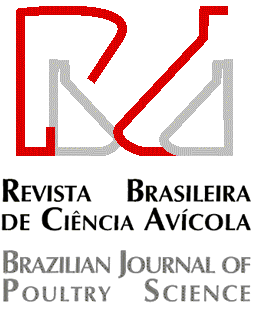Resumo em Inglês:
ABSTRACT The effects of the Kluyveromyces marxianus M3 strain, isolated from Tibetan mushrooms, on plasma lipids, egg cholesterol level, egg quality, and intestinal health of laying hens were evaluated. In total, 160 Beijing fatty laying hens (43 weeks old) were divided into four groups and fed a basal diet supplemented with 0%, 0.1%, 0.3%, or 0.5% freeze-dried K. marxianus M3 powder for four weeks. The results showed that yeast supplementation reduced serum total cholesterol (TC), triglyceride (TG), low density lipoprotein-cholesterol (LDL-C), and very low density lipoprotein-cholesterol (VLDL-C) levels (p<0.01), and increased serum high density lipoprotein-cholesterol (HDL-C) level (p<0.05). Moreover, regardless of K. marxianus M3 dietary addition level, the cholesterol content of the eggs decreased by more than 26%. When0.3% yeast was supplemented, significant differences were found in the egg weights, shell strength, albumen height, Haugh unit and nutrient content of the eggs (p<0.01). Finally, 0.3% yeast supplementation improved the intestinal flora conditions of the hens by decreasing the Salmonella and Staphylococcus aureus counts (p<0.01) and increasing the Bifidobacterium count (p<0.01). The results in this work demonstrated that yeast culture supplementation to the diets deceased the serum and egg yolk cholesterol, and increased egg quality.
